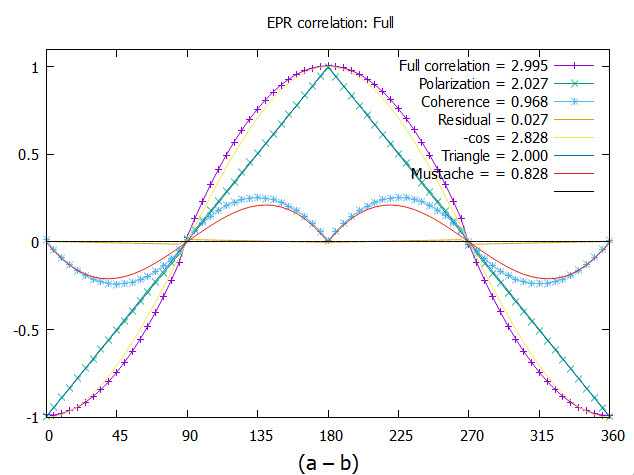Article
Version 7
Preserved in Portico This version is not peer-reviewed
Non-local EPR Correlations Using Quaternion Spin
Version 1
: Received: 16 January 2023 / Approved: 31 January 2023 / Online: 31 January 2023 (04:19:48 CET)
Version 2 : Received: 3 February 2023 / Approved: 6 February 2023 / Online: 6 February 2023 (02:04:35 CET)
Version 3 : Received: 31 March 2023 / Approved: 3 April 2023 / Online: 3 April 2023 (04:12:41 CEST)
Version 4 : Received: 3 April 2023 / Approved: 4 April 2023 / Online: 4 April 2023 (03:54:28 CEST)
Version 5 : Received: 29 July 2023 / Approved: 31 July 2023 / Online: 1 August 2023 (10:03:11 CEST)
Version 6 : Received: 17 October 2023 / Approved: 18 October 2023 / Online: 18 October 2023 (10:08:48 CEST)
Version 7 : Received: 26 January 2024 / Approved: 28 January 2024 / Online: 29 January 2024 (04:18:41 CET)
Version 2 : Received: 3 February 2023 / Approved: 6 February 2023 / Online: 6 February 2023 (02:04:35 CET)
Version 3 : Received: 31 March 2023 / Approved: 3 April 2023 / Online: 3 April 2023 (04:12:41 CEST)
Version 4 : Received: 3 April 2023 / Approved: 4 April 2023 / Online: 4 April 2023 (03:54:28 CEST)
Version 5 : Received: 29 July 2023 / Approved: 31 July 2023 / Online: 1 August 2023 (10:03:11 CEST)
Version 6 : Received: 17 October 2023 / Approved: 18 October 2023 / Online: 18 October 2023 (10:08:48 CEST)
Version 7 : Received: 26 January 2024 / Approved: 28 January 2024 / Online: 29 January 2024 (04:18:41 CET)
How to cite: Sanctuary, B. Non-local EPR Correlations Using Quaternion Spin. Preprints 2023, 2023010570. https://doi.org/10.20944/preprints202301.0570.v7 Sanctuary, B. Non-local EPR Correlations Using Quaternion Spin. Preprints 2023, 2023010570. https://doi.org/10.20944/preprints202301.0570.v7
Abstract
A statistical simulation is presented which reproduces the correlation obtained from EPR coincidence experiments without non-local connectivity. In addition to the spin polarization, we identify spin coherence as an attribute, and complementary to polarization, which is anti-symmetric and generates the helicity. This changes the point particle spin to a structured one with two orthogonal magnetic moments of spin $\frac{1}{2}$ each. They couple in free flight to form a spin 1, a boson. Upon encountering a filter, the boson decouples into its two independent spins axes of $\frac{1}{2}$, with one aligning with the filter and the other randomizing. The process of decoupling from a free-flight boson to a measured fermion is responsible for the quantum correlation which results in the observed violation of Bell's Inequalities. The only variable in this work is the angle that orients a spin on the Bloch sphere, first identified in the 1920's. The new features introduced here result from changing the spin symmetry from SU(2) to the quaternion group, $Q_8$.
Keywords
foundations of physics; dirac equation; spin; quantum theory; non-locality; helicity
Subject
Physical Sciences, Quantum Science and Technology
Copyright: This is an open access article distributed under the Creative Commons Attribution License which permits unrestricted use, distribution, and reproduction in any medium, provided the original work is properly cited.
Comments (0)
We encourage comments and feedback from a broad range of readers. See criteria for comments and our Diversity statement.
Leave a public commentSend a private comment to the author(s)
* All users must log in before leaving a comment









